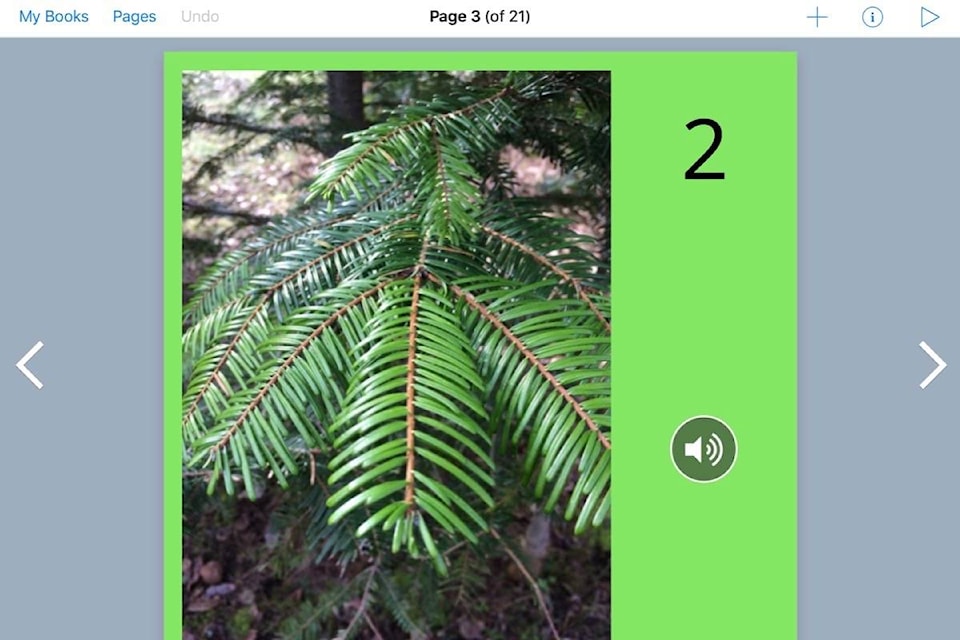Students in three School District 69 (Qualicum) schools are being taught Hul’qami’num, a First Nations language.
The teaching began as a pilot project in September, 2015.
There’s now so much demand for the district’s one Hul’qami’num language instructor, Colleen Manson, that the district’s Indigenous resource teacher, Carrie Reid, has developed a software tool to help kids learn.
“It’s pretty exciting,” Reid said of her role in helping more people learn Hul’qami’num. “I was just playing with the software. I didn’t know I was doing something exciting.”
The district’s Indigenous education program principal, Rosie McLeod-Shannon, said the goal of the program is to foster greater understanding of the people who spoke (and continue to speak) the language, as well as to keep it going.
“Our hope in the beginning was to create this understanding of the language and how important the language is,” she said.
“We felt that the more kids learn about the language of the people, the more respect for the people and the land they would have and create a better understanding between themselves and others.”
When trying to understanding a person’s or a group’s actions, it helps to understand how they think, and the language they speak can have a big impact on that, said McLeod-Shannon.
“It also keeps the language alive,” she said. “(The program) is to revitalize the language that was spoken and then lost in many cases.”
One of those cases is Pentlatch.
That’s the language that was mostly spoken in the area where SD69 operates, said Reid. “The last speaker died in the ’70s,” she said.
The Hul’qami’num language is a Coast Salish language spoken by First Nations groups in areas of the east coast of the Island, as well as the Lower Mainland and the Fraser Valley.
In a 2014 study of B.C. First Nations languages, 1.4 per cent of the people in the communities that traditionally speak the language are fluent, while 5.2 per cent speak some of the language, and 10.9 per cent are learning.
In general, the report shows, the number of semi-fluent speakers of First Nations languages is up.
Classes in Bowser, Nanoose Bay and Qualicum Beach elementary schools are contributing to that growth with the Hul’qami’num language instruction.
Qualicum Beach Elementary (QBES) is the newest addition to the program.
After a teacher expressed interest in getting the program to QBES, Manson’s schedule was further stretched to place her at that school for a half-day a week, said McLeod-Shannon.
“She agreed to it, and sure enough, we had four teachers sign up,” said McLeod-Shannon.
Asked how she feels about the demand for the program, McLeod-Shannon said it’s “incredible.”
“It shows that there is a value, that people value the language, and that they are willing to do whatever to be able to include (Hul’qami’num) in their teachings.”
But teachers are hard to find, and Manson’s time is already stretched across those three schools.
So, as a way to help students (and teachers) practice the language when Manson isn’t around, Reid came up with a new digital resource.
Using an iPad, Reid made an iBook in which images are shown with the Hul’qami’num word for them.
When you press a button, a recording of several fluent Hul’qami’num speakers saying the word is played, letting students hear how to pronounce the words, as well as slightly different pronunciations.
“Most of the teachers can’t read the orthographies (letters/written language systems) that have been developed for indigenous languages, so this actually pronounces the word for kids to hear, or adults,” said Reid.
So far, iBooks on wild animals, words related to salmon, and the weather have been made, in addition to others, she said.
One of the iBooks teaches the Hul’qami’num counting system, which Reid said is pretty complex.
“The word for ‘one basket’ is not like ‘one’ and ‘basket,’ it’s a word for ‘one basket’ and it’s a different word for ‘one object’ or ‘one canoe,’” she said.
The iBooks are just one of the many teaching resources Manson is using to teach kids Hul’qami’num, and she and Reid already have plans for improving it.
“We want to actually have more sentences, otherwise all these adults are going to go around talking like babies, like going ‘bird’ or ‘wolf’ whereas we want to put it in a sentence, so that’s what we’re moving to next,” said Reid.
Students’ learning of the language is already having an impact on the community.
Manson has taken some of her students to a Hul’qami’num language challenge in Ladysmith, and this past year one group won second place, said McLeod-Shannon.
On another occasion, McLeod-Shannon was attending an event at Bowser’s outdoor education centre, and students came out singing in Hul’qami’num.
“It was very, very, very powerful,” said McLeod-Shannon. “A lot of people were really taken by that.”
